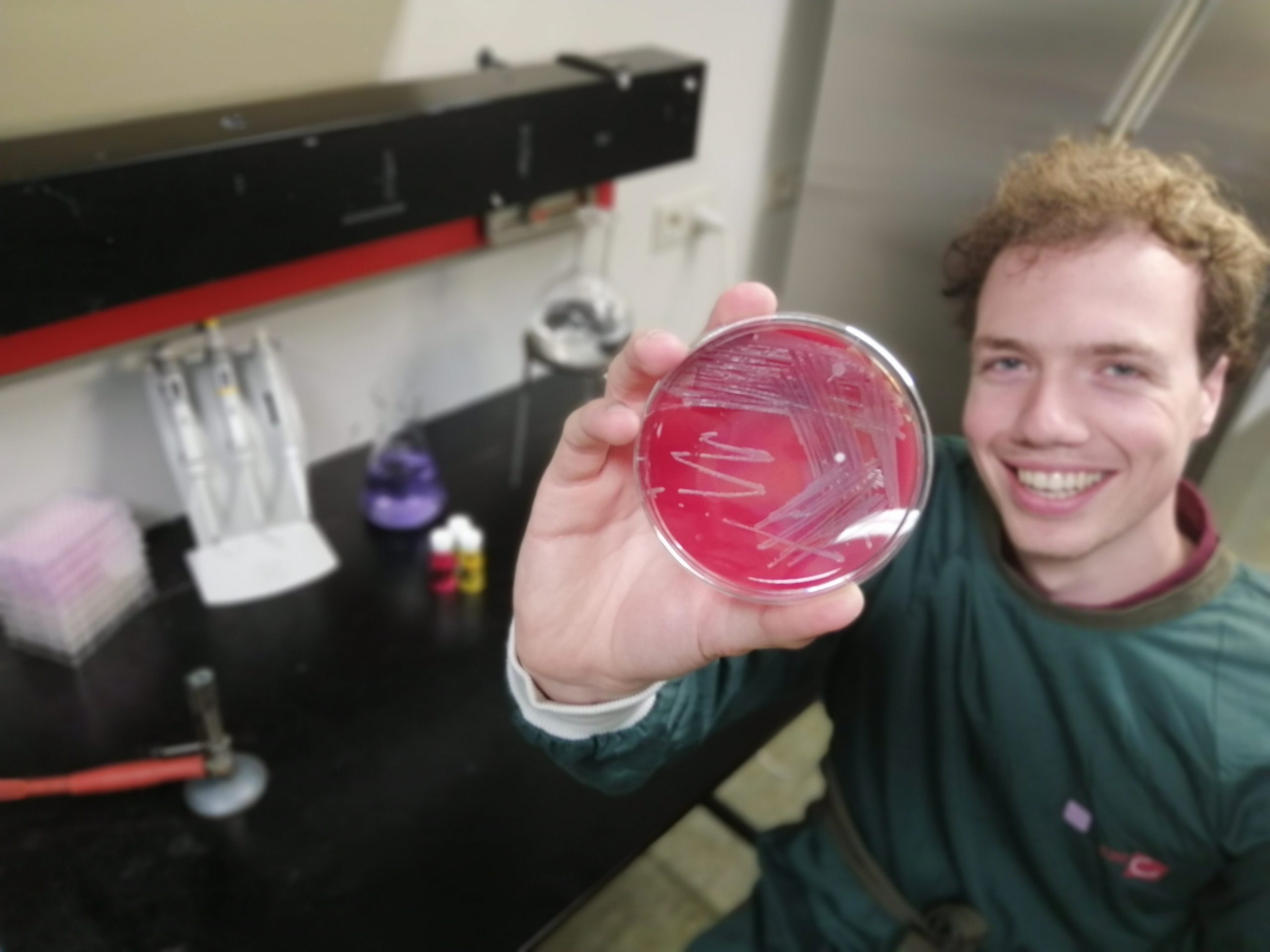
22 Feb Boas van der Putten discovers new bacterial species
Discovering a new species includes much more work than one may think. It is not only about a identifying a full genome or establishing a name for the species. Officially recognizing a new bacterial species takes money, time, and perseverance.
In the world of microbiology, making a discovery like this comes around once in a lifetime. While taxonomy, the branch of science concerned with classifying organisms, is not the most fascinating subject, it’s imperative to allocate a microbe to its appropriate species. Boas van der Putten, PhD fellow at AIGHD, spent the past 3 years identifying a new Escherichia species; the Escherichia ruysiae. The newly acknowledged bacterium, sister of Escherichia coli, will now be made available to the wider public, exhibiting its full DNA sequence.
Within the microbiology community, it was commonly known that there are five identified and acknowledged species of the Escherichia genus and there are at least another five bacterial strains that had not been appointed to any species. The DNA sequence of these five strains was already publicly available in online databases, but nobody had taken the necessary steps to define the new species and determine to which strains they belonged. These unknown species, referred to as “clades”, deserved a name, Boas believed. He was compelled to take on this task.
The discovery of a new bacterium
The first step to recognizing a new bacterial species is having the bacterium at your disposal in the lab. “Whilst I was enjoying some exercise during my usual jog outside, I suddenly realized that we actually encountered this unknown bacterium in one of our projects, but that it was considered waste from another study that served other purposes.” After the realization that this bacterium was in fact in the freezer at the Amsterdam UMC, Boas went on to research it. He isolated the DNA of the bacterium, which consisted of 1 chromosome and 1 plasmid. After he established the full genome of the bacterium, with help from a computational program, he performed a wide array of tests on the strain to identify its phenotype (physical appearance) and metabolic behavior. Boas noticed that within the known “clades” of mysterious bacteria that had already been identified, clades 3 and 4 looked so similar to one another that they could be merged into one common species. The isolated bacterium that Boas was working on looked very much like the strains in clade 4. Altogether, clades 3 and 4, as well as the newly established bacterium, could form a new species of Escherichia bacteria: Boas named it the Escherichia ruysiae species.
But why name it the Escherichia ruysiae? “It’s a little bit frowned upon in the scientific world to name a bacterium after yourself. I played it by the books and decided to name it the Escherichia ruysiae after the Amsterdam bacteriologist Charlotte Ruys, one of the first female professors in the Netherlands, who played a pivotal role in establishing Dutch reference laboratories for bacterial meningitis and for leptospirosis. These two (inter)national references laboratories are still active in Amsterdam today.
“It is not an inexpensive process”
To officially recognize a new species, many steps must be adhered to.
The new strain must be made publicly available in at least two global biobanks, to never lose the strain. Then, to prove that one is dealing with a new species, tests must be performed on an established list of indicators. Executing the tests often requires external help as one institution rarely has all of the necessary equipment. Then, the findings must be published in a peer reviewed journal. “Once all of this is done, you are already 3 years down the line, but it was definitely worth the wait!”
From now onwards, any researcher that encounters the Escherichia ruysiae will finally be able to categorize it. It has been established that the species does not seem harmful, and only lived for a short time in the subject where it was found. This was an international traveler returning from Asia.
Well done to Boas and the rest of the research team for their discovery and perseverance to acknowledge the new Escherichia species. We welcome E. ruysiae to the world of microbiology!
